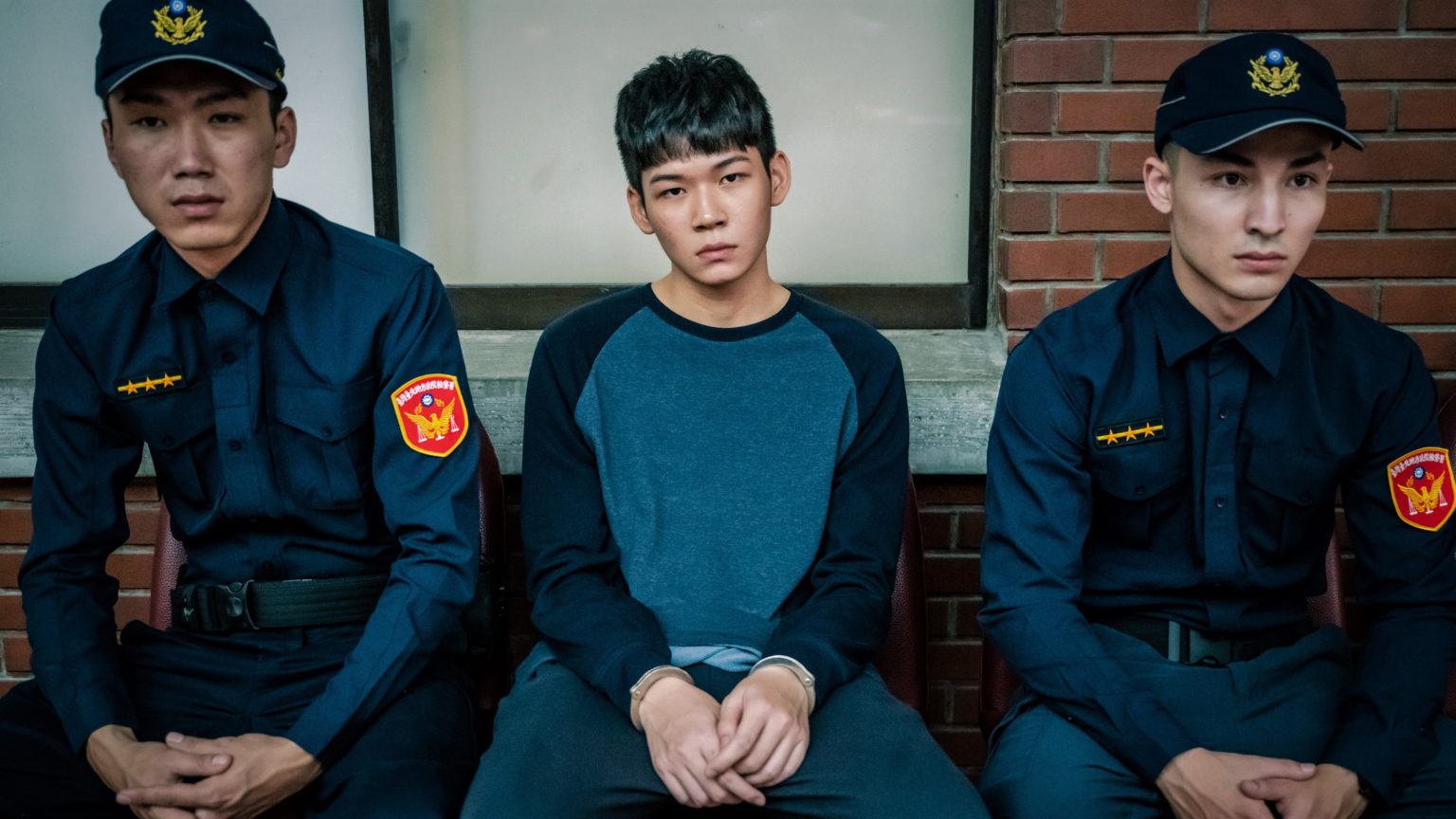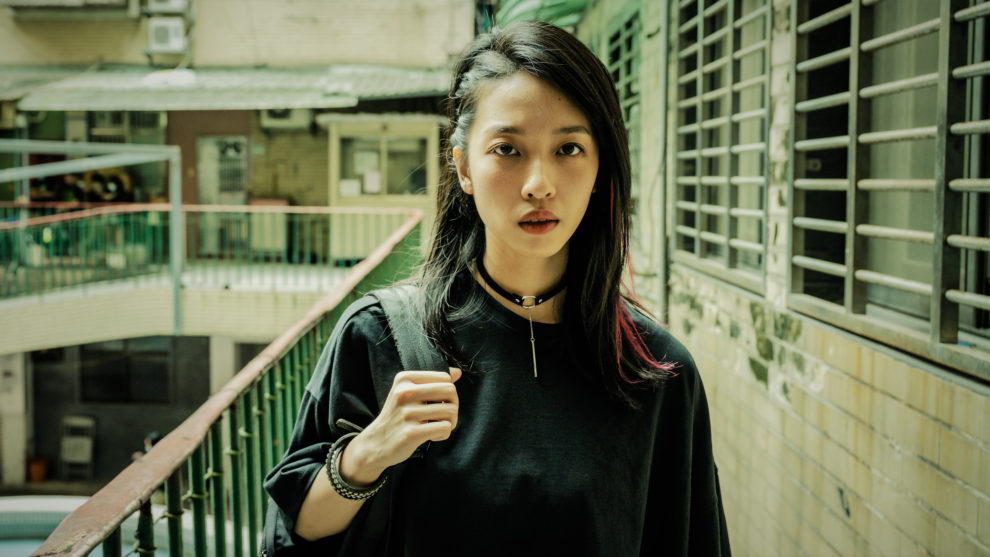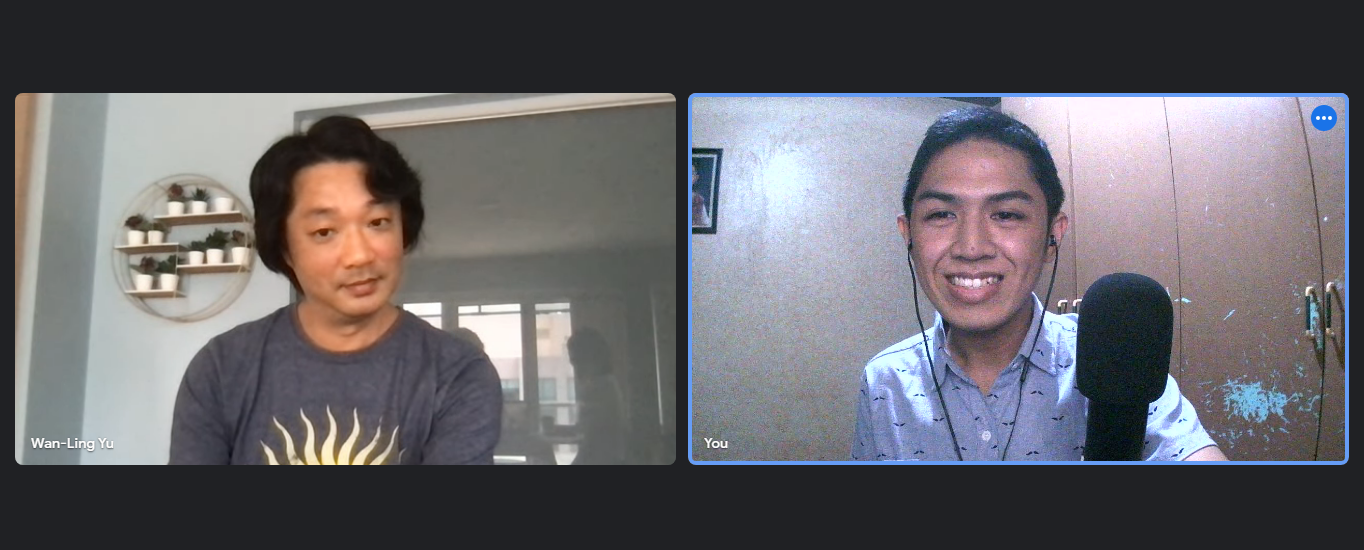Interview: 'Goddamned Asura' director Lou Yi-an on his multi-layered crime drama
 Friday, September 23, 2022 at 3:43PM
Friday, September 23, 2022 at 3:43PM 
Inspired by a 2014 real-life killing, Goddamned Asura explores the lives of six people involved in a ramdom shooting in a night market, including the perpetrator - a troubled teenager named Jan Wen. The film follows not only the lead-up to the shooting incident, but also the aftermath of the characters as they face the repercussions of the actions of Jan Wen.The result is a somber exploration of class, isolation, and violence that is unfortunately still timely and universal.
Goddamned Asura is Taiwan's official submission for Best International Feature Film at the 95th Academy Awards. In this interview, co-writer and director Lou Yi-an expounds on the origins and themes of the story as well as explaining some terms with their cultural context compared to their English translation...
[This interview has been edited for length and clarity.]
JUAN CARLOS OJANO: Congratulations on the film. You premiered the film last year and then screened it in Taiwan and in other film festivals. And now, you're submitted by Taiwan to be the official submission at the Oscars. How's the journey so far?
LOU YI-AN: I don't really think the final results would mean too much to me, but I just really want to let more and more people see this film and want to provide a different point-of-view other than the Western way of thinking.
I do want to start at the genesis of this film. The title card says that it was based on three in-depth articles about a random killing incident and one article on council estates. This was your third feature film as a director. What was it with that incident and these articles that made you go, "I wanna tell that story"?
As you said, I first started writing the story because I read the news article by the journalist Hu Muchyng. I started to think about the question "who really deserves to die?". During that time, the topic of whether to abolish death penalty was really a hot topic in Taiwan because of that random killing attack. So during that time, a lot of people are saying that [the perpetrator] deserves to die because of his crime. But I just keep wondering, is that true? Who really deserves to die because of this? And also, I was wondering if there is a kind of pureness in that person's heart that other people don't know about. I wanted to let people know through this film that people are actually multi-dimensional. And I wanted to let people see the kindness in humanity or just in humans.
The experience of watching this film was really moving to me because the film was very concerned about everyone involved. It wasn't just concerned in reenacting or depicting the said act of violence, but it's invested in knowing those characters. Why was it important to you to explore the other characters in addition to the perpetrator?
Even other than writing Asura, when I am writing any script, I try to find excuses for the characters just like we all do in our everyday lives. So I really wanted to not just focus on the negative side of people, but really to provide a point-of-view about the kinder and more positive side of those people.
The stories of those characters are actually based on a lot of my own experiences and also, they reflect some of my personalities and values. I sometimes wonder that if I had made some different decision back then or just a different decision at one moment in my life, would it be possible that I would become a totally different person. Everybody could have only known a cold-blooded and darker version of me and I wonder that maybe, it was just because of the randomness so I didn't become that. In the dialectical process of debating this, I try to prove whether humans are good or bad.
Like we said before, there was a random killing attack back in 2014 in Taiwan which was really shocking to the society in Taiwan. The main character in this film, people would relate the main character in this film to the perpetrator in that attack named Cheng Chieh. People are seeing this person as a demon, actually. I want to see if I could try to use this film to restore that person back to a human instead of just a demon.
The overall feeling that I got as I was watching the film is that the setup of having six characters builds a communal aspect to this story. And yet, in that communal experience, there is so much isolation going on. How was your process of trying to depict that paradox of them being together in isolation?
Originally, I wanted to just focus on the random killing event. But later on, I gradually wanted to portray this incident through people from different social classes, groups, and walks of life. And they will have their own stories and points-of-view. Some of them will be perpetrators, some of them will be victims or even family of the victims. And what they would all bring different aspects into this incident and I want to use all these inputs to give a more complete portrait of this incident. Instead of just telling people how poor the victim was or what was going around the perpetrator, I wanted to create a conversation with the audience.

*MINOR SPOILERS AHEAD*
The interior life of the characters are so rich and you provided so much context about the characters and yet, I know that I don't know everything about them. And that's what makes me keep digging into these characters and interested in knowing them more. And with the structure of the film – dividing it into three chapters – what was the importance of also exploring the what-ifs?
When I was first developing the script, in the first two years, the third chapter did not exist in the script at all. Later on, I realized I wanted to try to prove that people can have a lot of different aspects to their personality and people can be really different. But I realized I couldn't prove that people can be that different through what really happened with the random killing. So I realized I could develop the third chapter – the parallel world – and give [the perpetrator] an opportunity to make different decisions so that you can see that he can have a totally different life if he made that decision. He can try to prove that maybe, not all of us deserve to die, that bad people deserve to die. In the Chinese title of this film, "該死的 (Gāisǐ de)" – the "Goddamned" in the title – has a more specific meaning in Chinese that means "deserves to die". I just really want to delve into that and try to debate if he deserves to die.
*MINOR SPOILERS END*
That point about the translation was interesting. Now, it gives a different meaning to the character. Did you intend the film to be a commentary on the culture of violence in Taiwan or was it just on the event itself?
I don't consider the film to be any kind of commentary in real life events or phenomenon in our world, but I wanted to emphasize that the name of the third chapter ("Bridge of Hades") in Chinese is "奈何桥 (Naihe Bridge)". In traditional Chinese culture, we enter into another world when we die. In terms of reincarnation, after we walk through this bridge, we will forget everything and we are ready to start another new life. So "奈何桥 (Naihe Bridge)" means a turning point in that reincarnation cycle. I wanted to use this concept to give a little pessimistic portrait of our lives. It's hard to break out of this cycle. Maybe we can be different, but maybe we can't.
How do you merge depicting kindness and pessimism?
I think it's impossible to balance that, but I tried. A lot of my past works are a bit darker than this. But this time, I don't want the audience to walk out of the theater in a bad mood. I want to provide a little warmth to the audience and let them feel that it's not all hopeless. Maybe people are just not that bad.
It's so interesting that you mentioned the darkness of your past films because when I watch this film, despite its subject matter, it's so much more visually playful. Your use of color, light, framing, and depth of field. How did you decide on the overall visual style of the film?
Basically, we used colors to set the mood in the film. Especially for the different characters. For example, for Jan Wen, we used blue a lot in his scenes. We wanted to portray a world that's a little more emotionally repressed. In terms of Vita, we used yellow and brown more. We wanted to create a sense of openness. When we get into the third chapter, we wanted to provide colors that are more vivid. We wanted to create a feeling as if angels are around us and make us believe that something like fantasy is about to happen. It makes the audience believe that maybe, things can be different.
The visuals felt more intimate to the characters. They weren't just moving pieces in the story. The visual choices are invested in them. Did you shoot this during the pandemic?
Yes.
How did that, in any way, affect the way you made the film?
The pandemic didn't really affect the shooting of this film because this was shot in 2020. Back then, COVID cases in Taiwan were very few. And the only thing that's harder for the crew was to book locations in a hospital because of COVID. But other than that, it didn't really affect this film.
That's great to hear. I remember in 2020, I was so jealous of Taiwan. Like "aw, they were doing so well". Anyway, what are your hopes for Taiwanese cinema moving forward?
I think that, now, we have a feeling that it's pretty hard to reach international audiences these past few years. My hope is that Taiwanese cinema can have more different types of films that we can offer to the international audience. More different genres, for example.
I'm wishing you the best, not just in this Oscar season but in life and your future works. Fēicháng gǎnxiè nǐ!
Thank you!


Check out the official trailer for the film:




Reader Comments (3)
Join Our Website
dewa poker asia
link alternatif poker88
Visit my web page
kartu poker online | dewapoker
Your feedback helps me a lot, A very meaningful event, I hope everything will go well run 3